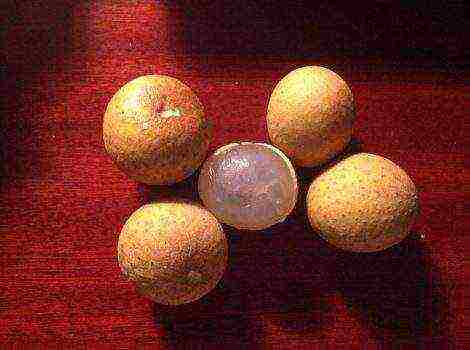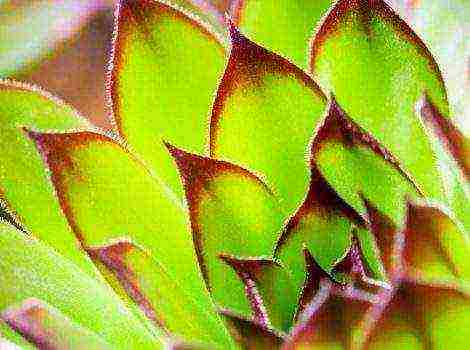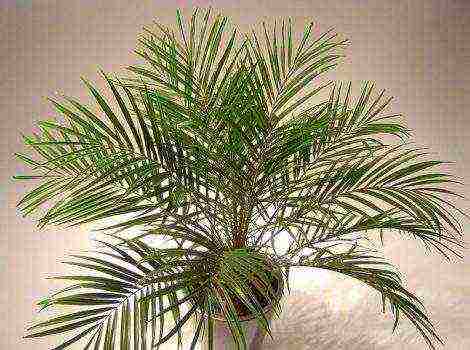Content
- 1 The best sheep breeds for home breeding
- 2 Building a home sheepfold
- 3 How to feed the sheep?
- 4 What do sheep get sick with?
- 5 Useful tips for novice sheep breeders
- 6 1 Best Sheep Breeds for Home Breeding
- 7 2 Arrangement of the sheepfold
- 8 3 Sheep feeding
- 9 4 Common diseases
- 10 5 Features of lambing
- 11 6 Sheep shearing
- 12 7 Recommendations for novice farmers
- 13 Where to begin
- 14 Feeding features
- 15 Breeding for meat
- 16 Shearing
- 17 How to properly care for sheep
- 18 Lambing features
- 19 Useful Tips
Sheep breeding in Russia has its own long-standing traditions. These domestic animals are bred in all regions of the country where there are pastures. Animals are unpretentious, but very sensitive to high humidity. This is taken into account when choosing pastures and setting up a home sheepfold. Existing sheep breeds are selected for meat, milk or animal wool. Large farms are specialized. For home breeding, universal breeds are used.
How to raise sheep
Animal wool is used to make fabrics, warm things are knitted from it and felted shoes are made. Sheep cheese is prepared from milk, and lamb meat is a dietary product. The life expectancy of sheep at home can range from 20 to 25 years. For so long no one has kept them in peasant farmsteads. Animals intended for meat production are fattened up to a year or 1.5 years, and queens for breeding offspring are used for breeding purposes up to 10 years.
Sheep farm
Keeping sheep is profitable and interesting
The best sheep breeds for home breeding
Meat and wool breeds are the most widespread in domestic sheep breeding in Russia. The most popular of them is Romanov. It is versatile. Such animals are able to give a person meat, milk and wool.
Tribal Romanov sheep
Other versatile breeds are also well suited for domestic breeding. Among them are balabas, Tushinskaya, Karachaevskaya. In total, 39 main breeds of animals suitable for domestic breeding are cultivated in the country.
Balbas sheep breed
Sheep breeding, sheep breeds
To obtain fat, meat and wool, which goes to felt, fat-tailed breeds are bred. The most popular of them is Hissar.
Hissar sheep
They buy animals for growing and breeding in breeding farms that exist in various regions of the country. Today, there are 175 of them in the country. Of these, 98 are engaged in breeding fine-wool breeds, 28 - semi-fine-wool, 45 - coarse-wool, 4 - semi-coarse-wool and 2 - meat.
Each region of the country is focused on breeding certain sheep breeds. This is due to local climatic conditions. The main areas where domestic sheep breeding are widely developed are the North Caucasus, the South FD, the Volga region, the Central Black Earth belt of Russia and the South Urals. Sheep are also raised in other regions of the country, but this is not widespread.
Table 1. The most common sheep breeds in peasant farms in various regions of the country
| Middle lane | Romanovskaya, Tsigai, Volgograd, Kuibyshev |
| South of Russia | Tashlinskaya, corridor, North Caucasian, Romanovskaya |
| North Caucasus | Karachaevskaya, Tushinskaya, Ossetian |
| Desert areas and steppe areas | Edilbaevskaya, Romanovskaya |
| Siberia and South Ural | Tuvinian fat-tailed, Tsigai, Gorkovskaya, Lincoln, Kulundinskaya, northern short-tailed, Siberian short-fat-tailed, Edilbaevskaya |
Kuibyshev breed of sheep
Tashlin breed of sheep
When buying sheep of any breed, you must carefully examine the animals. A healthy sheep or ram should have a good physique, dense skin and a thick, shiny coat. The hooves of a healthy animal are shiny, do not have cracks, and the teeth do not wobble. You should not buy an animal that has mucosal inflammation, epidermal formations and growths.
Building a home sheepfold
Sheepfold frame and awning
Sheepfolds are built to keep sheep in the cold period. They should be warm enough, light and dry. The temperature in the lamb room should not be allowed to fall below + 10 ° C and for adult animals + 7 ° C. Wood or brick is used as material for the construction of the walls of the sheepfold. The choice depends on the breeding location of the animals and its climatic conditions.
Sheepfold made of white brick
House for adult sheep
For repair lights and rams, floor area (in square meters)
Good illumination of the room is achieved by installing windows in it. They should occupy an average of 1/15 of the total wall area. They are located at a height of at least 1.2 meters from the floor surface. At night, the sheepfold is illuminated by lamps placed under the ceiling.
A huge role in keeping sheep is played by the sex and size of the space intended for keeping one animal. For the normal development of lambs in the sheepfold, 0.7-0.8 sq. meters for each. An adult ram needs at least 3 square meters. meters. Up to 3-4 months, the lamb is next to the mother. For their maintenance, a separate corner is fenced in the sheepfold. The normative area for keeping animals includes a place for placing a feeder and a nursery.
Sheep with two lambs after lambing
Signs of lambing
The main requirement for the floors of a sheepfold is hardness. They can be of various types. The most common are adobe floors. They are made of clay, on top of which there is wood flooring and straw. The floor of the sheepfold should be 20-30 cm higher than the surface of the ground. The straw bedding should be changed periodically. Dampness of the premises can lead to illness and death of animals. For litter per animal, up to 150 kg of straw is required. Ventilation is installed in the sheepfold room. With its help, the supply and exhaust air circulation is provided, which allows you to get rid of the accumulation of excess moisture and unpleasant odors in the sheepfold.
Cubic capacity of air in a sheepfold (based on one head of a usable herd)
In large sheepfolds, two types of gates are installed. Large double-leaf gates with a wicket are installed at the entrance. Their width can be 2.5-3.0 meters, and their height is 2.0-2.5 m. The width of internal doors rarely exceeds 1.5 meters. They are installed in the opening that delimits the shepherd's vestibule from the animal room. The optimal size of the vestibule is 1.2 * 3.5 meters. For small sheepfolds, one door 1.5 meters wide is enough, which can be closed with tarpaulin or other material as insulation.
A base (yard for sheep) is arranged near the sheepfold, always placing it on the leeward side
The sheepfold should be close to the watering hole
How to feed the sheep?
Sheep farm
The diet of sheep consists of plant foods. In the summertime, animals are driven out to pastures. They feed on grass, which during this period of time grows everywhere in sufficient quantity. The sheep eat all grasses, including weeds and thorns. Water meadows and marshlands are not used for grazing. Do not drive sheep to pastures in the dew and after heavy rain. Pastures for them are selected only in arid places.
The best food for feeding animals in the pen is considered to be small grass and leguminous hay, as well as straw made from such grains as: oats, millet and barley. They are best absorbed by animals and contribute to their good growth and development. They will diversify the diet of sheep with root crops.Sheep eat well pumpkin, potatoes, beets, carrots and zucchini. At the end of summer, there comes a period when the herb begins to lose its beneficial properties. At this time, it is necessary to start feeding the animals. Their diet includes cereal greens specially grown for these purposes. It can be oats or rye. Corn, alfalfa and peas are added to the diet.
The diet of sheep is approximate
Approximate structure of the diet
Silage mixed with roughage or legume hay perfectly increases the meat and milk productivity of animals. Daily it can be fed to a sheep from 3 to 4 kg. The nutritional value of hay depends on the conditions of its storage and the composition of the herbs included in it. The best hay for sheep is harvested from contains a lot of vitamins, sugars and protein. They are all very important for the growth of animals.
Features of feeding sheep
Of the root crops, sheep love fodder beets, pumpkins, squash and carrots the most. Beets and carrots are especially important as they improve the digestion processes in the animal's body. These vegetables contain a lot of coarse fiber, vitamins and other trace elements necessary for the growth of sheep. Melon crops are necessarily included in the diet of suagging and lactating females. This contributes to an increase in milk production in the animal and the bearing of healthy offspring by the uterus. Improves such food and the quality of their wool. The cut is significantly increased. A sheep can be given no more than 4 kg of such vegetables per day.
Feeding the sheep
Concentrated feed plays a special role in the nutrition of sheep. They represent a balanced diet and are prepared from barley, oats, wheat, beans, peas, corn, as well as oilcake and bran. They are high in nutrients, starch, protein, fat and minerals. Concentrated feed is indispensable in the nutrition of highly productive sheep breeds, but the high cost limits the possibilities of its use.
Table 2. Seasonal diet of sheep
| Winter | Mineral salt, apples, vegetables, melons, mixed feed, silage, hay |
| Spring | Rock or mineral salt, grass, hay |
| Summer | Mineral salt, grass, hay, concentrate |
| Autumn | Mineral salt, grass in the pasture, vegetables, root crops, hay |
Feeding diet of queens
Feeding the uterus and newborn lambs
Females are fed only high quality, balanced feed. In the four weeks before lambing, the amount of hay consumed by the animals is reduced in the diet. It is replaced with compound feed. The daily diet consists of cereal hay, which is given to the uterus in an amount of up to 500 g, legumes - 300 g and straw - 500 g. Hay and straw are supplemented with 3.0-3.5 kg of vegetables or juicy feed. concentrates and 12-15 g of mineral salt. After lambing, the amount of hay in the sheep's diet can be increased to 1 kg, vegetables to 4 kg, and concentrate to 500 g.
Young cattle feeding ration
Lambs eat concentrated feed
For the first five days after birth, lambs feed on colostrum from the uterus. If for some reason such feeding is impossible, then the lambs are fed during this period with special mixtures or cow's milk. Milk feeding continues until the lambs are two months old. By this time, they should switch to a two-time feeding regimen. Until the lambs reach the age of one month, they are given 50 g of concentrated feed as bait every day, after two months this rate increases to 150 g per day.
What do sheep get sick with?
How to recognize a sick sheep in time
Dampness and draft can cause animals pneumonia... The cause of this disease is often the gases of ammonia and hydrogen sulfide, which accumulate in the premises of the sheepfold. The disease can be identified by its characteristic features. With pneumonia, the animal coughs, loses its appetite, has difficulty breathing, and its temperature rises. Sometimes the disease is accompanied by a purulent rhinitis.
The main way to prevent pneumonia is to ventilate the premises of the sheepfold and maintain a dry and warm microclimate in it. Treat the disease with antibiotics such as:
- benzylpenicillin;
- bicillin-3;
- streptomycin;
- neomycin;
- oxytetracycline;
- biovit-80.
Give drugs to the animal along with food and drink. At the time of the animal's illness, it is better to isolate it from the herd.
Death of sheep from infectious diseases
Very often, sheep carry a non-communicable disease such as rumen flatulence... It is associated with poor stomach function and is the result of improper feeding of the animal.
Symptoms of the disease:
- bloating;
- loss of appetite;
- increased anxiety.
In order to alleviate the suffering of the animal and improve its well-being, a special gas tube is inserted into the mouth. If this does not help, then they make a puncture of the scar. It is better to entrust such treatment to a veterinarian.
Eating poisonous grasses on pastures causes sheep poisoning, which is accompanied by diarrhea, loss of appetite, vomiting and stoppage of the stomach. They cleanse the sheep's body of poisons by washing the stomach with vegetable oil and Glauber's salt. They are mixed with warm water. For 0.5 liters of water, 100 g of oil and 50-100 g of salt are taken.
During periods when the sheep lacks food, it begins to eat its own wool. This leads to bezoar disease... The essence of the disease is that the gastrointestinal tract of the animal is clogged with a ball of wool. Very often, such a disease can be found in small lambs, whose uterus has poor milk production.
The hooves of animals can infect purulent bacteria that cause pulp inflammation... This makes it difficult for the animal to move and can cause lameness. The rot formed on the hoof must be cut off.
It is very important to monitor the composition of trace elements in the diet of animals. A lack of vitamin E in it, as well as some other trace elements, can cause dystrophy of the muscles of the skeleton of an animal. A very effective means of preventing this disease is a vitamin complex, which is introduced into the diet of an ewe. Small lambs should also be given vitamin E.
Ontagic pustular dermatitis of sheep
The most dangerous for animals are infectious diseases... They are the most difficult to deal with and are very quickly transmitted from one sheep to another.
The worst infection for sheep is listeriosis... It is caused by bacteria that are very resistant to environmental influences. The nervous form of this disease causes 100% mortality in animals. This disease is practically untreated.
No less dangerous bradzot... It is a general poisoning of the body. This disease leads to 100% death of livestock. As a prevention of this disease, animals are vaccinated and do not allow them to be walked on wet pastures.
Pulmonary adenomatosis or hyperplasia Causes coughs, frothy nasal discharge and breathing difficulties in animals. When a disease is detected, the animal is immediately removed from the herd, liquidated, and the case of the disease is registered.
Another infectious disease unpleasant for an animal is mastitis. With this disease, the udder of the animal becomes inflamed and pus may be released from it. The most common cause of this disease in sheep is improper housing and inadequate care. The disease can be treated, but it is necessary to start fighting mastitis immediately after its detection.
Timely vaccination is an effective prevention of infectious animal diseases such as smallpox and enterotoxemia.
Varch examines a sick sheep and takes tests
Fight against parasites
Along with feed or on pasture, sheep very often "pick up" parasites, which can cause various diseases in them. Viral infections are caused by a tick bite in an animal. Symptoms: high fever, fever and weakness.The death of an animal can occur from such a bite within a few days, but it is not 100% the outcome of the disease. Many animals successfully tolerate such bites and recover.
The wingless fly causes melophagosis in sheep. This skin condition is accompanied by severe itching, which causes the animal to tear its fur. The disease can cause intestinal upset and a rapid drop in animal weight and milk production.
Improper care of sheep can lead to the appearance of worms in their body. The disease is treated with medication. The dosage and type of drugs for the animal is determined by the veterinarian.
Book: Diseases of Sheep and Goats. You can download the file here.
Diseases of sheep and goats
Useful tips for novice sheep breeders
Proper maintenance of sheep
- To prevent scabies in animals, they should be bathed 2-3 weeks after spring cutting in a solution containing disinfectants.
- Lambs for breeding do not need to be taken younger than 4 months. At this age, they need special care and milk feeding.
- After 5 months, lambs and daisies cannot be kept together. During this period, puberty begins. Closely related mating, which can occur between animals, leads to infertility and the birth of weak, non-viable offspring.
- It is better to mating animals when they reach the age of one to 1.5 years.
Shearing
Video - Sheep Shearing and Clippers
Video - How to properly keep sheep
Video - Maternity ward for sheep
Video - How to properly raise sheep
Breeding sheep at home is one of the most profitable and promising areas of agriculture. Lamb and lamb, milk, wool, skins and fat - far from the whole list of products that can be sold on the market at a high price and used for personal purposes, with minimal costs for the farmer.
The content of the article:
- What does a beginner need to know?
- Breeding sheep of the Romanov breed at home
- Breed content
- Feeding the sheep
- Note for beginners
- What should you know about lambing?
- Newborn care
- Productivity
For small estates and farms, raising and raising sheep at home is the best solution. A huge advantage of this livestock industry is that a large area of land is not required for grazing, because the animals are kept together and are unpretentious in food. The profit in sheep breeding is large, while the costs are paid off in the shortest possible time.
What does a beginner need to know?
Sheep breeding at home for beginners is based on the development of a business plan. This will allow you to calculate the financial costs for the purchase of animals, the construction of a sheepfold and the choice of a pasture site. In addition, all risks are taken into account, the payback and possible income from the activity are calculated. Having identified all the nuances, you will be able to assess the profitability of the business.

After that, you should find a place for grazing sheep and build a sheepfold where it will be possible to keep animals in the cold season. Experts have found that a 40m2 room is sufficient for 10 females with lambs. It should be borne in mind that during the cold period in the sheepfold, it is necessary to maintain a temperature of at least 10 degrees Celsius. Also, the structure should have a ventilation hole and be well protected from drafts. Having determined the conditions for keeping animals, you can proceed to buying sheep. Experienced breeders recommend paying attention to the bright Romanov breed.
Breeding sheep of the Romanov breed at home
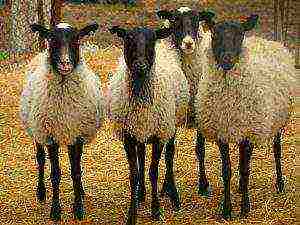
The Romanov breed of sheep is very popular. The main reasons for breeding this population are:
- The breed is fertile. The offspring of 1 ewe is from 3 to 6 lambs.
- The Romanov sheep has thick wool and even during the severe frosts, the cost of keeping them is minimal.
- Individuals grow quickly, so the farmer will receive meat in six months.A one-year-old ram reaches 80 kg.
- Large amounts of feed are not required to raise animals. Sheep can feed on moss, rough straw, leaves and dead grass.
- By 5 months of age, individuals begin to puberty. During the year, the bright is sexually active, as a result, the livestock is rapidly increasing.
- The products of the Romanov breed are of high quality. Therefore, raising sheep at home pays off quickly and brings significant profits.
A farmer who decides to buy this breed should decide what he wants to get from the sheep? When the goal is set, you just have to calculate:
- How many individuals you have to buy.
- The amount of feed.
- The need to build a sheepfold or sheds are enough for you.
Please note that it is better to purchase adult animals, as their appearance will determine compliance with the standards. Of course, you can save money and buy young animals. But in this case, you run the risk of being wrong with productivity.
Breed content
For the household, novels are the most convenient, since they are not difficult to maintain. In the cold season, one individual will need 3 m2 of indoor space and up to 4 m for walking. The walking area should contain a canopy and feeders.
If you have a room, then you need to prepare it before importing animals. In the future sheepfold, everything should be carefully cleaned up and garbage should be thrown away. After that, disinfection is carried out with a special solution. You can buy the product at a veterinary pharmacy. Before work, be sure to read the instructions. The sheepfold after processing must be weathered for at least a week.

If there is no room for keeping sheep, it should be built. The sheepfold should be warm. This is required to prevent the newborn lambs from dying. Particular attention is paid to humidity and ventilation. The floor can be made of plank, earthen or left earthen, you decide. Romanovka do not tolerate dampness, so you will need to change the litter constantly, as it gets dirty. You can use straw or sawdust for these purposes.
Feeding the sheep
Choosing a place for feeding and installing feeders should be so that it is convenient not only for the sheep, but also for their owners. The best option are troughs with an inclined bottom, nursery type. For an adult to be comfortable, it needs 20-25 cm.
When building a yard for walking, it is imperative to erect sheds to protect the sheep from the sun's rays during the hot season. Consideration of feeding the sheep is necessary in advance. Even in the summer, the first days after the purchase, the sheep should be kept in the sheepfold without a walk. Thus, they will get used to their new place of residence. At first, the animals are fed with cut grass.
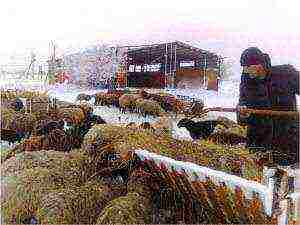
The main diet for a day for an adult:
- Meadow hay - 2 kg. If necessary, you can use 2 kg of straw and 1 kg of meadow hay.
- Root crops - 2 kg.
- Oat and barley mixture - 250 gr.
Young individuals eat 30-70% of the daily value of an adult animal.
Power circuit:
- Morning is hay.
- In the afternoon - cereals and root crops.
- In the evening - straw and hay.
In summer, the flock grazes in the pasture and feed costs are zero. In the case of poor herbage, the sheep are added to the diet of concentrates, at the rate of 300 gr. for 1 individual. If there is no opportunity to graze the flock, then feed the animals with freshly cut grass. This is a very time consuming process.
When raising sheep at home, it must be borne in mind that they require feed additives. Buy them at the pharmacy, after consulting your veterinarian.
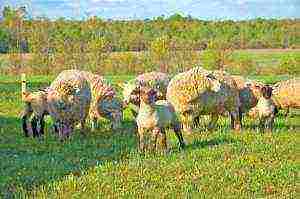
Animals should always have access to lick salt and water, even sheep drink on the pasture, keep this in mind.
Note for beginners
So you have acquired animals, now you have to observe their behavior.
Features of behavior
- Sheep hunting. Females and males begin to behave a little differently. This indicates that they are ready to mate.But the Romanov breed can only happen if the individual has reached 40 kg. Only in this case will healthy offspring be obtained.
- Fertilization is performed 2 times a day, in the morning and in the evening.
- With proper and complete care, the bright ones give offspring all year round, and this is a good profit for the owner.
- One brane is capable of fertilizing 20 queens. But be sure to buy 2 males in case the second one gets sick.
- In the future, a ram is selected, from which the offspring are healthier and more productive, and the second male is castrated.
You should know that a sheep can happen only 2 months after the lambs were beaten off and preventive vaccination was carried out. With grazing, the flock is given the best plots and must be fed with compound feed (400 grams per 1 individual). When kept in a stall, the diet is selected based on the condition of the animal.
What should you know about lambing?
The pregnant uterus should receive enhanced nutrition, rich in vitamins and minerals. The owner must record the date of mating and the name of the ewes. This is required for the timely separation of her before lambing from the herd. In the Romanov breed, the duration of bearing the fetus is 145 days.

2 days before giving birth, the hair should be cut around the udder. Be sure to prepare the cage in which the lambing will take place. It should have clean and fresh bedding. Shortly before giving birth, the udder of the lamb swells, the belly sinks, everything under the tail swells and turns red. Before lambing, the female begins to behave restlessly and often lies down.
Childbirth
- The birth canal is revealed. This continues for 2 hours. The animal must not be touched at this time.
- Contractions. The pharynx is open, the abdomen contracts intensively and a lamb appears. In the normal course of lambing, the umbilical cord breaks off by itself. Be sure to check that the lamb does not cover its mouth and nose with plastic, otherwise it may die.
- Within 20-40 minutes, the second lamb and the next ones appear.
- In the normal position of the fetus, the lambs go forward with their legs, but sometimes - backwards. In this case, it is necessary not to allow the head of the lamb to remain in the uterus for a long time.
- The uterus almost always gives birth on its own. After leaving the afterbirth, the lambing is complete.
- If the afterbirth does not come out, you must call the veterinarian.
Newborn care
In half an hour, large lambs already stand on their legs and begin to suck milk from the udder. Weak individuals must be substituted under it. If the offspring is more than 2 individuals, complementary foods are required. The best option is goat's milk, since it is well absorbed by the lambs.

Weak individuals are introduced to complementary foods using baby bottles. Milk is given at first in small portions, over time the volume increases. It is allowed to use substitutes in case of a lack of natural milk. From the age of one month, lambs are introduced to the diet of concentrates. For these purposes, small feeders are installed with ground compound feed, vitamin supplements, salt and chalk. From the age of four months, the grown lamb is removed from the uterus. Now they can lead an independent life.
Productivity
Sheep are sheared three times a year - in autumn, spring and summer. This is due to the shedding seasons, since being late can lead to a loss of wool quality. The Romanov breed is very productive:
- The ram gives up to 3 kg of wool.
- The farmer receives 1.5 kg of wool from the sheep.
But the breed is mainly bred as a meat breed. An average ram weighs 70 kg, some individuals reach 100 kg, a sheep - from 40 to 50 kg.
Due to the constant readiness of sheep for breeding, you can select the most convenient time for the appearance of offspring. Basically, up to 3 lambs are born, that is, one uterus is capable of providing up to 100 kg of young lamb and 3 high-quality fleeces if lambs are slaughtered at 8 months. Because of these qualities, Romanov sheep are used for intensive meat production.
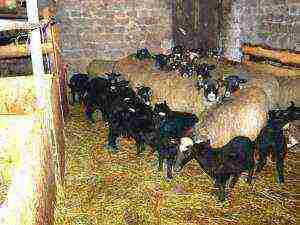
Advantages of the breed
- High quality fleece.The coat has a bluish-gray color with a steel shade, is not prone to felting, the flesh is strong. The awn corresponds to the down 1: 4-1: 10.
- Polyesterity - the breed is able to inseminate all year round.
- Large offspring. There are 300 lambs per 100 queens, with the most fertile individuals producing up to 9 cubs.
- Early maturity is high. In a year, the animals are ready for insemination. At the same time, ewes are carrying offspring for a week less than other breeds of sheep.
- The first production can be obtained in 5 months - this is a bright wool. And at 9 months - high quality young meat.
Disadvantages of the breed
You should pay attention to the following nuances:
- Animals are susceptible to respiratory diseases.
- Overly shy.
- They do not tolerate drafts and high humidity.
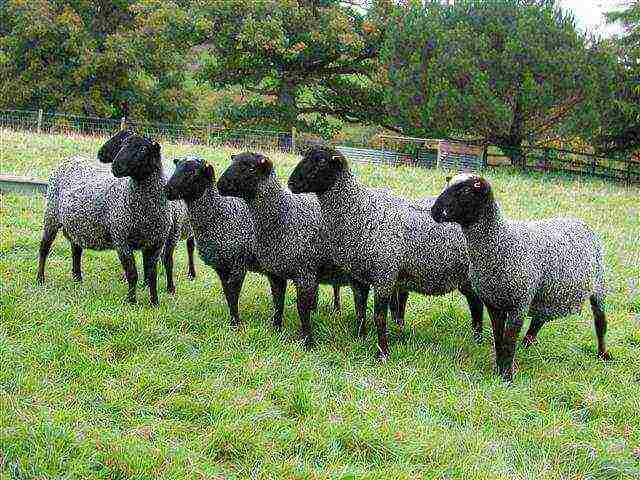
Romanov sheep are very popular in home breeding due to their high productivity and easy care. This is of particular importance for a novice sheep breeder. But it should be remembered that it is necessary to acquire an animal only from responsible producers who conduct breeding work and adhere to breed standards.
Raising sheep at home is considered a lucrative business. These animals are hardy, healthy and highly productive. They are able to provide the owner not only with meat, but also with high quality milk, fat and wool.
Each breed has its own characteristics. A novice farmer needs to decide what is of higher priority for him: obtaining meat, lard, milk or wool.
- IMPORTANT TO KNOW! Do not cut "fungal" nails! Nail fungus is eliminated as follows: treat the nails with the usual ...
>>
1 Best Sheep Breeds for Home Breeding
Versatile meat and wool varieties are very popular with farmers:
- Romanovskaya. Perfect for home growing. Animals of the Romanov breed are distinguished by fast growth rates and are resistant to many diseases, they provide the owner with meat, milk and wool.
- Kuibyshevskaya. Long-haired breed of sheep. Produce quality meat and wool.
- Latvian. They are short-haired sheep that grow quickly. It is not difficult to breed them, and the meat is considered one of the most delicious.
- Tushinskaya. These animals have good indicators of meat, wool and milk.
- Karachaevskaya. Sheep have strong immunity, they are able to withstand frost and rain.
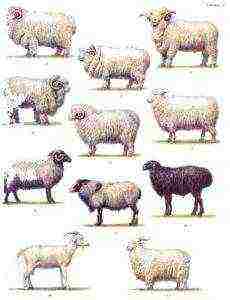
If the farmer's goal is to obtain meat, lard and wool, which will be used for felt, then he should get a fat-tailed sheep breed. The most common are:
- Gissar. These are hardy large animals weighing about 200 kilograms.
- Edilbaevskaya. An unpretentious breed that can live in arid and windy conditions. These animals, even with poor-quality nutrition, are able to gorge on fat tail fat.
Breeds of fat-tailed rams and sheep: description and rules of maintenance
2 Arrangement of the sheepfold
It is recommended to build a corral for livestock from brick or wood. The room should be spacious, warm, free of drafts and excessive moisture. It requires natural light to penetrate into it, and the required temperature is about 10 degrees Celsius. Sheepfold windows should be installed at a sufficient distance from the floor so that animals cannot reach them. It is necessary to pay attention to ventilation, it must rid the sheepfold of unpleasant odors and excess moisture. Floors should be firm and covered with straw. It is worth changing it from time to time and making sure it is dry. The room needs regular ventilation and cleaning.
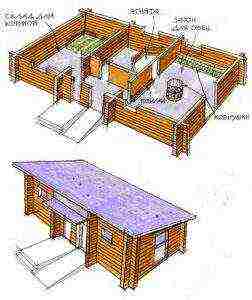
One animal should have about 10 square meters. If individuals live in close quarters, this can provoke a number of diseases.
Characteristics and breeding of the Hissar sheep breed
3 Sheep feeding
In summer, animals spend most of the day in the pasture and feed on grass. You can feed them with corn silage and hay. As additives you should use:
- chalk, which is a source of calcium;
- salt (per day, 10 grams of the product should fall on an adult, and 5 grams for lambs);
- bone flour.
In the cold season, in addition to hay, the following foods should be included in the diet of animals:
- wheat bran;
- vegetables (carrots, beets);
- beans;
- cereals;
- sunflower cake.
Animals need abundant nutrition in order for them to gain weight faster and be healthy. The queens need high-quality fortified feed. 30 days before lambing, you should not give hay, but compound feed. Lambs in the first month of life can only feed on mother's milk. Then concentrated mixtures are gradually introduced into their diet. Rams must be provided with coarse food, which must contain a large amount of protein.
Keeping and breeding ducks at home: recommendations for beginners
4 Common diseases
Sheep have strong immunity, but if they are not properly cared for, they are affected by diseases.
- 1. Dampness causes pneumonia in animals. Symptoms include:
- increased body temperature;
- cough;
- labored breathing;
- loss of appetite.
It is recommended to treat the ram with antibiotics. To prevent disease, it is necessary to keep animals warm and dry, and also not to graze them in rainy weather.
- 2. Scar flatulence occurs due to improper feeding. Symptoms of this common condition include:
- bloating;
- refusal to eat;
- nervousness.
Sheep are treated by puncturing the rumen.
- 3. Poisoning occurs when an animal has eaten a poisonous plant. Its features are:
- unwillingness to eat;
- diarrhea;
- vomit.
In case of poisoning, the stomach of the animal should be rinsed.
- 4. On the hooves of sheep and rams, purulent growths appear, which lead to lameness. To avoid this, feed the animals nutritiously and keep them in a clean and warm environment.
- 5. Bezoar disease is a condition in which a sheep begins to eat its wool, which clogs the animal's gastrointestinal tract. The reason is inadequate feeding.
- 6. The infectious disease listeriosis is caused by bacteria, is practically untreated and can kill all sheep.
5 Features of lambing
Sheep are highly fertile, large breeds bring five lambs at a time. The offspring quickly adapts to housing conditions and does not require additional care. Females have a maternal instinct, so the owner does not have to care for young animals.
It is advisable that a veterinarian be present at the birth of the lambs. This will avoid possible complications and preserve the offspring.
The lambs should receive their first milk no later than half an hour after birth. If the mother is weakened and cannot feed the offspring, the owner must milk and give it to the young.
During this period, sheep bring up to 150 liters of milk. Some farmers get rid of the newborns and sell them to cheese dairies.
Sheep milk has a high fat content, but it contains less nutrients than cow or goat milk.
6 Sheep shearing
In coarse-haired and semi-coarse-haired breeds, the fleece should be removed in early spring. It is important to choose the right time, as in the summer the animals begin to molt. Re-sampling of wool should be carried out in the fall.

It is not necessary to shear fine-wooled sheep early; in summer they practically do not shed. It is enough to take off their fur once a year.
Lambs, which were born in spring, are sheared after a year, and winter offspring - in autumn.
It is important that the fur of the animal is not wet during clipping. Two weeks after removing the cover, the sheep are washed with disinfectants to avoid diseases.
7 Recommendations for novice farmers
To raise sheep to become a profitable and profitable business, you must follow some rules:
- 1. Lambs should be purchased at the age of four months.
- 2. From five months, the sheep and the ram must be kept separately.
- 3. The room in which the animals will be kept must be spacious, clean and warm.
- 4. Feeders and drinkers should be washed out in a timely manner.
- 5. The sheep should be abundantly fed, including nutritional supplements in their diet.
- 6. The occurrence of individuals is recommended when they reach the age of one year.
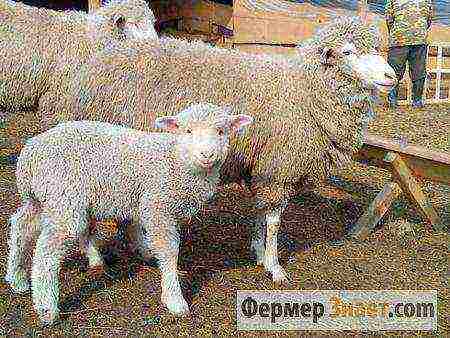
Content:
- Where to begin
- Feeding features
- Breeding for meat
- Shearing
- How to properly care for sheep
- Lambing features
- Useful Tips
Breeding sheep and rams is a good chance for a novice farmer to find their niche in the livestock business. These animals are hardy, have excellent health and are able to demonstrate high rates of productivity even with poor feeding.
In addition, this type of livestock is versatile. Breeding is bright allows you to get meat, wool and milk equally. In this article we will try to answer all your questions. How to start a business, how to feed and care for these amazing animals.
Where to begin
Any experienced farmer on the question "where to start raising sheep?" without hesitation, he will answer, of course, with the preparation of a business plan. This will help you better think about the financial costs of acquiring animals, building a sheepfold and places for pasture. In addition, you will be able to calculate the projected profit from the sale of products, thereby finding out the profitability of your business.
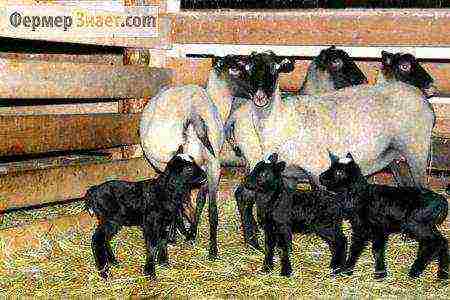
Then you need to select a pasture where the animals will spend most of the year and build a sheepfold for winter keeping.
The choice of pasture directly depends on the number of flocks. For comfortable grazing of one sheep and lambs, you need about one hectare of land per year.
In addition, sheep grazing is best done in the immediate vicinity of a water body. One adult individual consumes about 10 liters of water per day.
For winter maintenance, it is necessary to build a sheepfold. To keep a dozen females with lambs, it is quite possible to limit yourself to a room of about 40 square meters.
Despite the fact that sheep are immune to temperature extremes, the room should be at least 9 degrees Celsius. In addition, you need to take care of ventilation and the absence of drafts.
Having dealt with the conditions of keeping the flocks, you can proceed to the acquisition of animals. You can buy sheep from farms. Many farmers recommend buying a bright Romanov breed for a start.
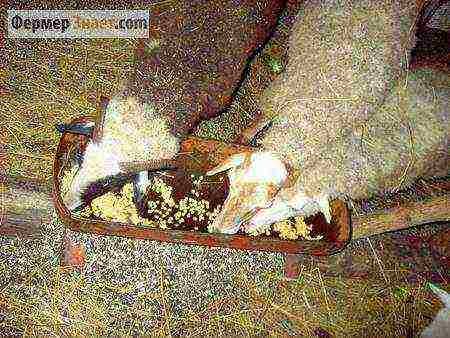
Feeding features
It is also worth thinking about feed. As already mentioned, animals are very unpretentious in food. Therefore, raising sheep at home is economically profitable.
From early spring to late autumn, the flock is quite capable of feeding on the pasture. In the winter season, sheep eat root crops and hay with pleasure. Therefore, it is advisable to equip a small vegetable garden in conjunction with a livestock farm.
Breeding for meat
Breeding sheep for meat at home is not a big deal. Animals gain weight very well. Mostly young lambs are used for meat.
This is usually done this way. One or two of the most active males are left (they will be producers), and the rest of the rams are heavily fed in the summer, and slaughtered in the fall.
In addition to green food, it is recommended to give cake, root crops, grain crops. For faster weight gain, you can use a combination feed.
Advice. Before fattening, you can trim the animals selected for slaughter. It has been noticed that sheared sheep have a significantly increased appetite, respectively, the gain in live weight will be much better.
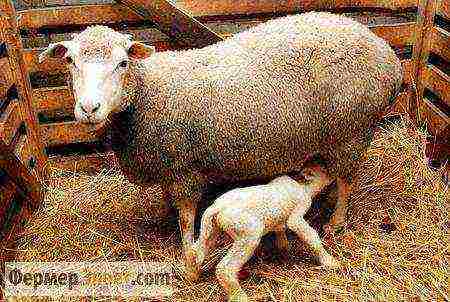
If breeding these animals at home means getting high-quality and tasty meat for you, you should pay attention to the meat-sucking variety of these pets. They are also called fat-tailed.
Shearing
Don't forget that raising sheep means getting not only meat, but also wool. Thus, there is a double benefit.
The wool of these animals is highly valued in production. Gloves, socks, sweaters, carpets, blankets are made from it.
It is recommended to shear the sheep twice a year, before the start of grazing and in late autumn, before the onset of frost. For these purposes, it is best to purchase a special electric machine. This will allow you to process the entire flock with minimal effort.
Advice. Before you start shearing animals, you must leave them without water and food for about 14 hours.
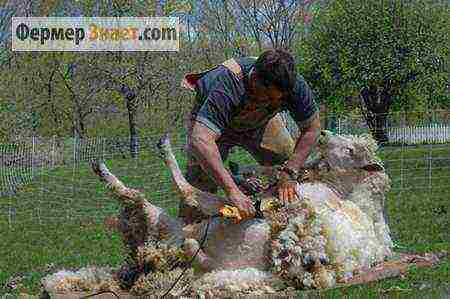
How to properly care for sheep
Caring for sheep at home, although troublesome, is not problematic. The main thing is to follow a few basic rules.
Caring for your flock begins with the mandatory vaccination of the entire herd. This will reduce the risk of infections.
It is worth noting that the vaccine usually lasts for about six months, so do not forget to repeat this event regularly.
Do not forget to regularly invite a veterinarian to check your patients.
The fact is that some diseases that are fatal for sheep do not have pronounced symptoms at the initial stage. Therefore, only an experienced specialist can determine the disease.
Despite the fact that sheep can endure low temperatures, they also have a weak point. These are hooves. Therefore, the floor in the sheepfold must be planked and covered with straw mat. In addition, the hooves need to be cleaned and trimmed regularly, otherwise joint problems can begin.
It is useful to include salt in the daily diet. In addition, tree twigs can be given to the sheep as a source of vitamins.
Remember not to try to bring the sheep into submission by beating and grabbing wool. This can cause stress in animals, which can negatively affect productivity.
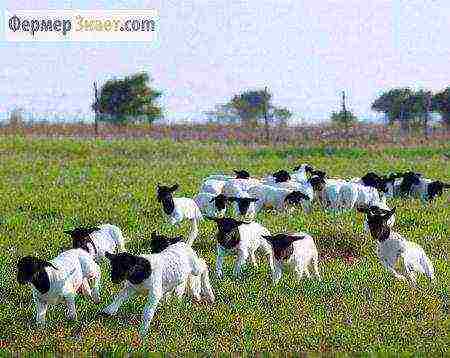
Lambing features
Sheep are very prolific animals. Some breeds are capable of producing up to five lambs at a time.
It is worth noting the fact that the survival rate of young animals is very high, about 100%. Lambs do not need special conditions of keeping or additional care. Females have a very developed maternal instinct, so they usually take care of their offspring on their own.
Lambing usually goes away without complications, but it is recommended to invite a veterinarian to be on the safe side. Human participation in the birth of lambs is usually reduced to freeing the baby from the amniotic fluid and removing mucus from the respiratory tract.
Remember that in the first 2-3 hours after birth, the lamb must be fed with mother's milk. If the female is unable to feed her cub on her own, the farmer needs to milk her and give her lamb milk.
It is worth noting the fact that almost all varieties of domestic sheep during lactation can feed two or three babies without problems.
Each female is capable of giving about 150 liters of milk during the feeding period. Therefore, some farmers slaughter newborn lambs (their skins are very valuable), and they donate sheep's milk to a cheese dairy.

Although this type of business takes place, it does not bring big profits. The fact is that, despite the fat content, sheep milk in its composition is much inferior to cow and goat milk. Therefore, if you decide to build your business on the delivery of smushki (fleece of a newborn lamb) and milk, it makes sense to decide in advance on the sales market.
Useful Tips
We hope that all of the above information will help you decide where to start raising sheep and how to care for the animals in the future.Instead of a conclusion, we want to give you some useful tips for keeping sheep at home:
- Choose a pasture away from busy freeways. The fact is that sheep are herd and cowardly animals. The flock will instantly scatter from the sharp and loud sounds. Moreover, animals are also frankly stupid, they are not able to find their way to a grazing place or a sheepfold on their own.
- For a more comfortable keeping of sheep in the pasture, you should think about purchasing an electric fence. This device will protect your charges from predators and save on staff costs.
- It often happens that the flock does not have a leader, so the sheep graze on their own. To keep them in check, you can have guard dogs or graze the flock with the goats.
- In order to control the mating of animals, it is recommended to keep the breeding rams separately.
